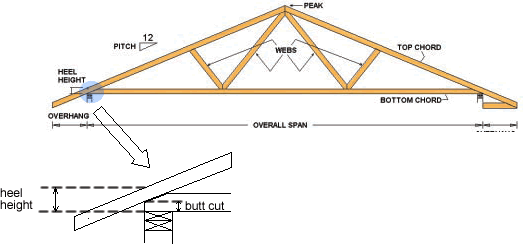Trusses are gradually replacing the conventional rafters to the point that nowadays more than 80 percent of new residential construction uses trusses to support the roof.
Roof trusses vs conventional framing.
Conventional roof framing requirements it is very important that conventionally framed roof systems comply with the provisions of the code section r106 1 1 and section r301 1 respectively.
A stick framed roof is made up of individual rafters and that are connected to a top beam.
Ing where floor and roof trusses are used and accommodates 24 inch spacing of studs where wind loads permit or where larger studs are required for thicker in.
This first image is from a roof project being constructed using the stick frame technique.
Example what stick framing looks like compared to trusses.
The roof and ceiling can be attached to the same member.
4 major pros of stick framing.
Additional boards are placed horizontally on the frames to create a complete cover for the structure.
Most types of trusses eliminate your attic space.
The beam or the ridge is the central part of the structure as all the framing must be connected to it.
As you can see circled in red on the left is a bunch of boards or sticks connected together to support the frame of the roof.
If any last minute changes are made to how things look it can simply be changed one piece at a time.
This disadvantage can be significant for larger structures in which conventional framing would provide a large usable attic.
Let s go through a few lists of pros and cons of both stick framing and trusses to begin.
Also in a structure with exposed roof framing trusses produce a manufactured appearance that may be undesirable.









